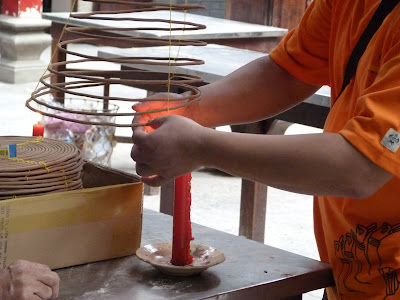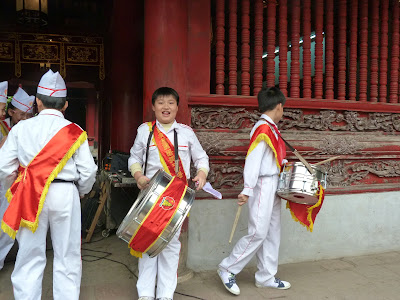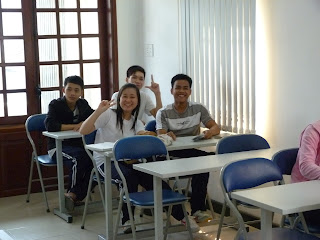We decided to go to Vietnam rather impulsively. We wanted to go somewhere warm in late February, when we could get free. We had heard of the
Streets International Project, because it was created by Neal Bermas, who was our son Asher's teacher in the restaurant management course that he took in New York. Neal was very kind to Asher and was hoping that Asher would come to Vietnam as a volunteer in his project. If Asher hadn't fallen to his death in Peru, his next stop would most probably have been Vietnam, so our visit was also a tribute to Asher's memory.
This program takes young people from very impoverished backgrounds and teaches them both cooking skills and hospitality skills, as well as English, so that they can find employment in Vietnam's rapidly expanding tourist industry.
This picture was taken in a classroom. The students were waiting for their teacher. Happiness and optimism glow on their faces.
No comment is necessary here.
The founder of the project, Neal Bermas, travelled to Vietnam pretty soon after the country began to welcome tourists, and he fell in love with it. Motivated by the feeling that America had done so much harm to the country that it was only right for Americans to do some good for it, he took on this project with all his professional skills and intelligence.
The school runs a fine restaurant in Hoi An, and we recommend it highly.
Eat there and make a contribution to the project, too.






























